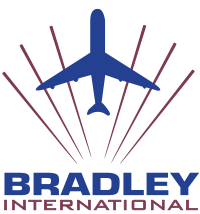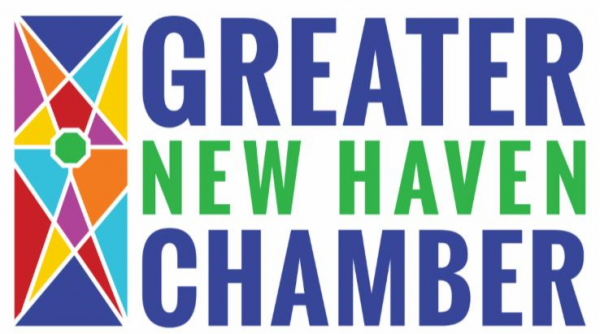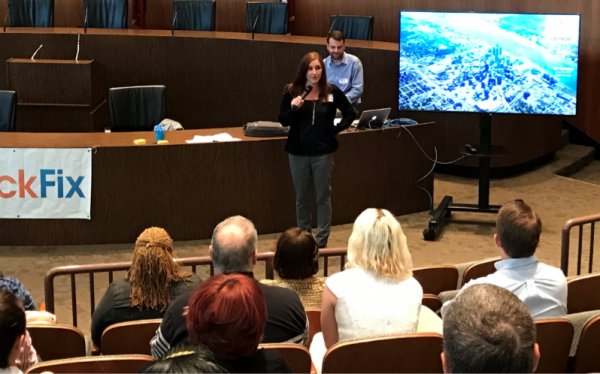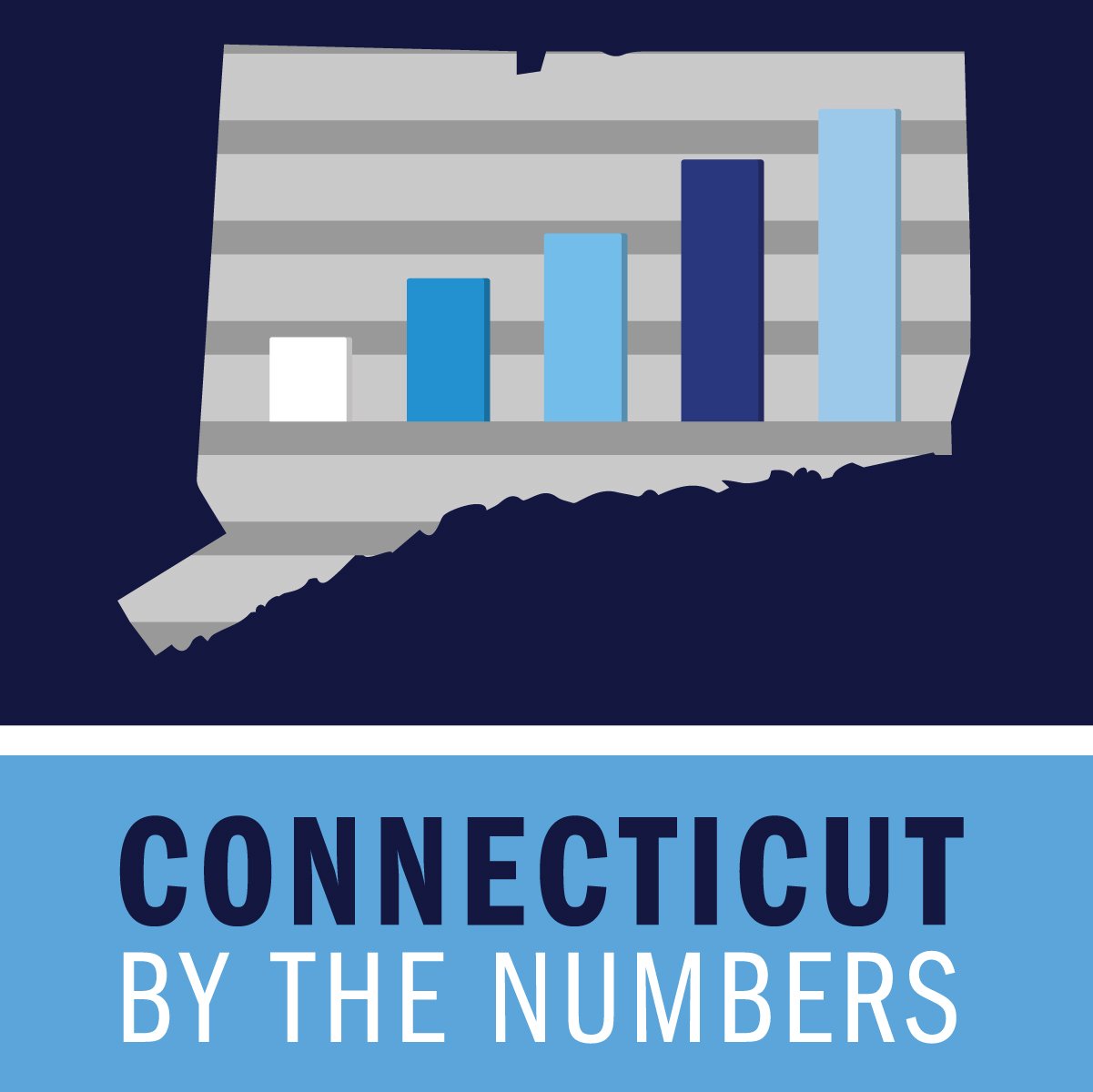Traffic is for Women, Weather is for Men (Mostly) on Connecticut TV
/Rachel Frank is an Emmy award-winning meteorologist, seen regularly throughout FOX61 evening newscasts. Kaitlyn McGrath is a meteorologist for NBC Connecticut. As women, they are the exception in Connecticut, where 16 men routinely provide the weather updates on Connecticut television stations.
Traffic reporting, however, is a women’s domain in the state. The news teams at all four television stations in the market – WFSB, WTNH, NBC and FOX - have women handling the traffic reporting responsibilities on their morning newscasts, and observers are hard-pressed to recall a man doing that job.
The latest shake-up of the weather reporting team at WTNH, NewsChannel 8, brought the disparity into sharper focus with half-page newspaper ads and television promos trumpeting the new all-male team of meteorologists, highlighted by the addition of veteran meteorologist Joe Furey, who moved to the station last month from FOX61. Furey, named co-chief meteorologist, joins Sam Kantrow, Fred Campagna, Gil Simons and Kevin Arnone.
Also starkly absent from the meteorology and traffic reporting ranks in Connecticut – ethnic and racial diversity.
First, the traffic. Morning newscast viewers see Rachel Lutzger on FOX, Nicole Nalepa on WFSB, Teresa Dufour on WTNH and Hanna Mordoh on NBC.
Nalepa wears many hats at channel 3, also serving as a health reporter and fill-in-anchor for the station. Before joining the station, she was weekday morning anchor and reporter at WWLP-TV/22News in Springfield, MA, after having graduated Magna Cum Laude with a degree in Communications from Westfield State University. Mordoh earned a bachelor’s degree in Journalism and Criminal Justice from Indiana University and was a news reporter in Indiana and Kentucky before joining NBC Connecticut.
 Lutzger also handles traffic reporting each morning for Kiss 95.7, Country 92.5, The River 105.9, WELI and KC101, and afternoons on The River 105.9. A native New Yorker, she first came to Connecticut to attend the University of Hartford. In addition to traffic reporting, Dufour is co-host for CT Style, a daily lifestyle program on WTNH. She graduated from the University of Connecticut in 2001 with a bachelor’s degree in broadcast journalism, and handled traffic reporting for WFSB before moving over to WTNH.
Lutzger also handles traffic reporting each morning for Kiss 95.7, Country 92.5, The River 105.9, WELI and KC101, and afternoons on The River 105.9. A native New Yorker, she first came to Connecticut to attend the University of Hartford. In addition to traffic reporting, Dufour is co-host for CT Style, a daily lifestyle program on WTNH. She graduated from the University of Connecticut in 2001 with a bachelor’s degree in broadcast journalism, and handled traffic reporting for WFSB before moving over to WTNH.
Connecticut briefly lost its most visible female meteorologist when Frank, an honors graduate of Pennsylvania State University with a bachelor’s degree in meteorology and a native New Yorker, left the station briefly in 2014 for New York City’s WPIX. She returned to Connecticut and FOX61 later that year. McGrath’s most memorable career moments, according to the station’s website, were covering everything from severe thunderstorms and flooding, to life threatening heat and an EF2 tornado in Charleston, South Carolina. She earned her degree in Telecommunications/News Broadcasting at the University of Florida, and, earlier this year, a Certificate of Science in Geoscience; Broadcast Meteorology Concentration, from Mississippi State University.
At FOX, Frank is joined on-air by Matt Scott, Dan Amarante and Sam Sampieri. The NBC “First Alert” team includes Bob Maxon, Ryan Hanrahan, Darren Sweeney, and Josh Cingranelli, along with McGrath. The full-time meteorologists at WFSB are Bruce DePrest, Mark Dixon, Mike Cameron and Scot Haney. At WFSB, the all-male ranks are occasionally joined by reporter Melissa Cole, who serves as a “fill-in meteorologist, lending a hand during major weather events,” according to the station’s website. She studied Meteorology at Villanova University, and initially joined WFSB as a weekend newscast meteorologist.
A national study published this month in the Bulletin of the American Meteorology Society, found that although “the overall percentage of females in the field increased and females were more represented in larger markets, females held fewer influential and desired positions in 2016 compared with previous studies. Females made up 8% of chief meteorologist positions and less than 11% of evening shifts, which was lower than numbers in previous studies.”
According to the American Meteorological Society (AMS), in 2005 about 20 percent of meteorologists nationally were women, up from 10 percent in 1995. In 2010, the Boston Globe reported that “for the first time, all five of the meteorologists on Boston’s early-morning and midday newscasts are women.” Among them was Dylan Dreyer, now with NBC News and the network’s Today Show. Commenting on a WeatherChannel program earlier this year with leading female meteorologists now working at national television networks, including ABC News Chief Meteorologist Ginger Zee, the program host observed in a blog post, “Check the numbers on female chief meteorologists around the nation. It’s pretty pathetic.”
In a 2015 article published by Medium, it was reported that an AMS membership survey of its 14,000 members indicated that 2 percent were African-American.



Photos: Traffic reporters (above, clockwise) Hanna Mordoh, Nicole Nalepa, Rachel Lutzger, and Teresa Dufour; Weather reporting teams at NBC Connecticut, FOX61 and WFSB.





 This marks the 13th consecutive quarter with an Outlook of +15% or stronger, according to Manpower Group. Compared with this time one year ago, hiring prospects are slightly stronger in the Northeast and remain relatively stable in the other three regions. The Northeast Region includes Connecticut, Maine, Massachusetts, New Hampshire, New Jersey, New York, Pennsylvania, Rhode Island, and Vermont. Employers across all sectors report favorable hiring intentions, with those in durable goods manufacturing reporting the strongest intentions in the past 10 years.
This marks the 13th consecutive quarter with an Outlook of +15% or stronger, according to Manpower Group. Compared with this time one year ago, hiring prospects are slightly stronger in the Northeast and remain relatively stable in the other three regions. The Northeast Region includes Connecticut, Maine, Massachusetts, New Hampshire, New Jersey, New York, Pennsylvania, Rhode Island, and Vermont. Employers across all sectors report favorable hiring intentions, with those in durable goods manufacturing reporting the strongest intentions in the past 10 years.

 The company - FreshBev LLC - produces two primary lines of beverages - RIPE Craft Juice and RIPE Craft Bar Juices, bringing real fresh juice to the market, and connecting local farmers to consumers by using only ingredients that could be traced back to the grower and region.
The company - FreshBev LLC - produces two primary lines of beverages - RIPE Craft Juice and RIPE Craft Bar Juices, bringing real fresh juice to the market, and connecting local farmers to consumers by using only ingredients that could be traced back to the grower and region. The results are making local history, and spreading. RIPE Craft Juices are available nationally through Whole Foods and select regional grocery chains.
The results are making local history, and spreading. RIPE Craft Juices are available nationally through Whole Foods and select regional grocery chains.
 “Despite growing private-sector demand, it appears that construction employment in some parts of the country is being brought down by declining public-sector investments,” said Ken Simonson, chief economist for the association. “Some of these declines will be offset thanks to recently enacted state infrastructure funding increases, but stagnant federal investments are not helping.”
“Despite growing private-sector demand, it appears that construction employment in some parts of the country is being brought down by declining public-sector investments,” said Ken Simonson, chief economist for the association. “Some of these declines will be offset thanks to recently enacted state infrastructure funding increases, but stagnant federal investments are not helping.” e of new construction jobs during the past year, followed by Nevada (12.8 percent, 9,700 jobs).
e of new construction jobs during the past year, followed by Nevada (12.8 percent, 9,700 jobs).
 his 12 year old son and a friend play a game in their backyard in Fairfield, using a perforated plastic golf ball and a broomstick handle. They had given up on baseball and softball – not enough players for two teams, not enough space for a field, and too many broken windows.
his 12 year old son and a friend play a game in their backyard in Fairfield, using a perforated plastic golf ball and a broomstick handle. They had given up on baseball and softball – not enough players for two teams, not enough space for a field, and too many broken windows. The National Toy Hall of Fame receives thousands of nominations annually. Whiffle Ball was nominated, but not selected, in 2015. The final 2017 toy inductees, chosen on the advice of a national selection advisory committee, will be announced at The Strong museum on Thursday, November 9. Only two or three of these finalists will join other iconic toys in the hall and sit alongside past inductees such as Barbie, LEGO, Monopoly, Rubik’s Cube, and Star Wars action figures.
The National Toy Hall of Fame receives thousands of nominations annually. Whiffle Ball was nominated, but not selected, in 2015. The final 2017 toy inductees, chosen on the advice of a national selection advisory committee, will be announced at The Strong museum on Thursday, November 9. Only two or three of these finalists will join other iconic toys in the hall and sit alongside past inductees such as Barbie, LEGO, Monopoly, Rubik’s Cube, and Star Wars action figures. The Strong’s National Toy Hall of Fame recognizes toys that have engaged and delighted multiple generations, inspiring them to learn, create, and discover through play. Criteria for induction include: Icon-status (the toy is widely recognized, respected, and remembered); Longevity (the toy is more than a passing fad and has enjoyed popularity over multiple generations); Discovery (the toy fosters learning, creativity, or discovery through play); and Innovation (the toy profoundly changed play or toy design).
The Strong’s National Toy Hall of Fame recognizes toys that have engaged and delighted multiple generations, inspiring them to learn, create, and discover through play. Criteria for induction include: Icon-status (the toy is widely recognized, respected, and remembered); Longevity (the toy is more than a passing fad and has enjoyed popularity over multiple generations); Discovery (the toy fosters learning, creativity, or discovery through play); and Innovation (the toy profoundly changed play or toy design).
 broken meters and streetlights, potholes, and even excessive noise from ice-cream trucks). Officials can track, manage and reply within the app. It has since expanded to some 300 municipalities across the country.”
broken meters and streetlights, potholes, and even excessive noise from ice-cream trucks). Officials can track, manage and reply within the app. It has since expanded to some 300 municipalities across the country.” Hurricane Harvey, the efforts with Houston instantly intensified. Berkowitz said SeeClickFix has worked with the city of Houston and several of its neighboring suburbs since 2009, handling an estimated 30,000 residents. Those numbers will likely jump when the totals for 2017 are tallied. Berkowitz told CTNewsJunkie that will be especially true in the coming weeks as operations shift from emergency calls handled by police and other emergency personnel to calls that are SeeClickFix specialties, such as power outages, downed trees and other types of “more routine” assistance.
Hurricane Harvey, the efforts with Houston instantly intensified. Berkowitz said SeeClickFix has worked with the city of Houston and several of its neighboring suburbs since 2009, handling an estimated 30,000 residents. Those numbers will likely jump when the totals for 2017 are tallied. Berkowitz told CTNewsJunkie that will be especially true in the coming weeks as operations shift from emergency calls handled by police and other emergency personnel to calls that are SeeClickFix specialties, such as power outages, downed trees and other types of “more routine” assistance. The company’s website continues to proudly boast “Made in New Haven” and Berkowitz’ company profile explains “The inspiration for SeeClickFix came from a desire to improve his own community with his neighbors and his government.”
The company’s website continues to proudly boast “Made in New Haven” and Berkowitz’ company profile explains “The inspiration for SeeClickFix came from a desire to improve his own community with his neighbors and his government.” from the top down” as the publication highlights “some of the most promising projects, initiatives, and companies that are springing up in every state of the union. Together, they present a portrait of the country today—its concerns and responses, and its enduring capacity for progress.”
from the top down” as the publication highlights “some of the most promising projects, initiatives, and companies that are springing up in every state of the union. Together, they present a portrait of the country today—its concerns and responses, and its enduring capacity for progress.”




























